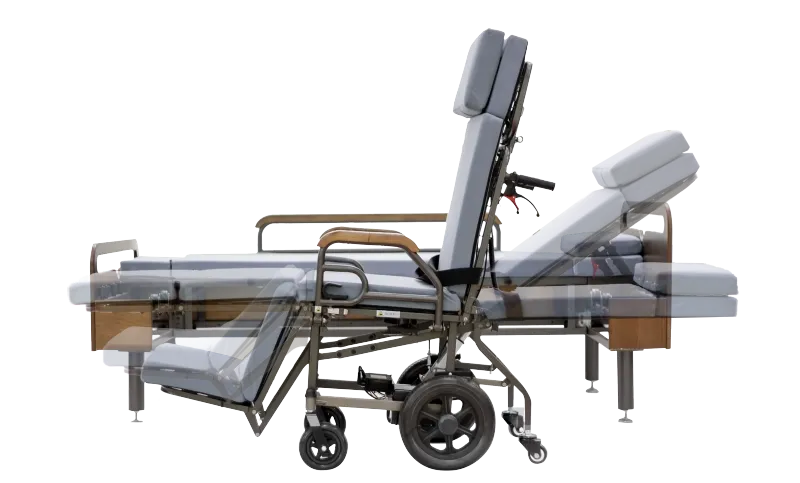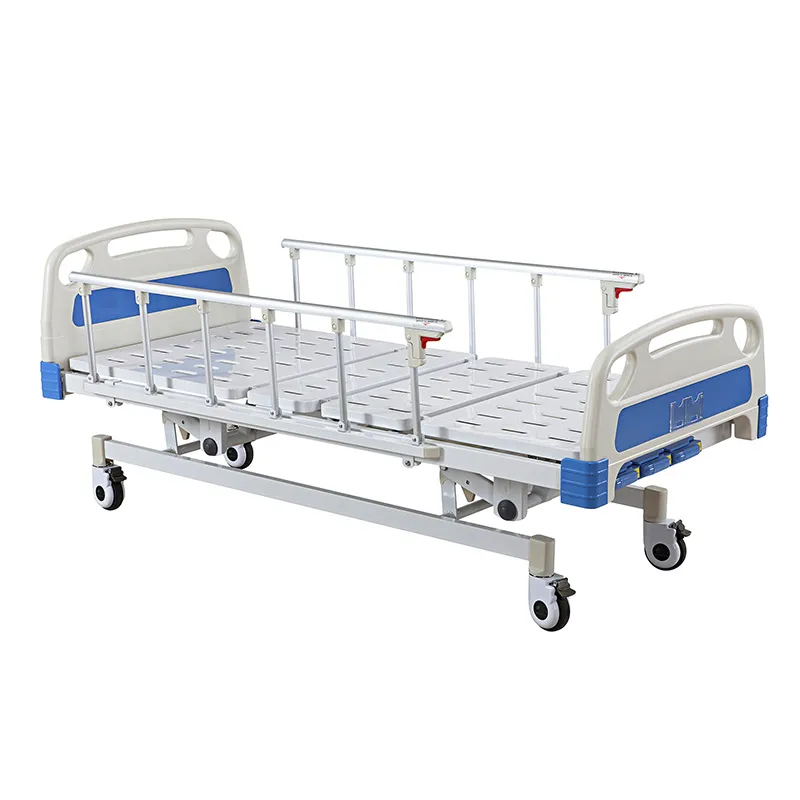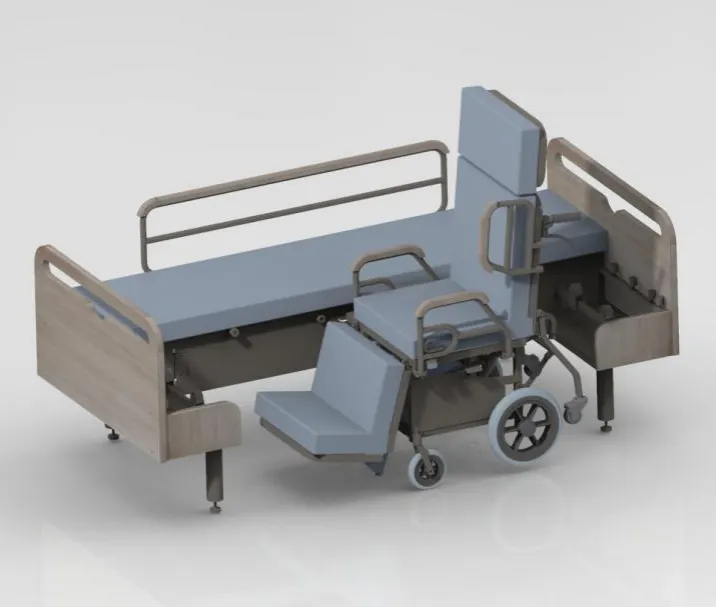
How do hospital beds help home care patients?
2024-11-25 15:30
In today's society, home care is increasingly becoming a realistic option for many families, especially when a family member needs long-term care or rehabilitation. Although home care may appear to be more family-friendly than hospital inpatient treatment, it also brings new challenges, one of the most critical factors being the choice of hospital beds. Hospital beds play an important role in home care, not only providing the professional support patients need, but also bringing convenience to caregivers.
This article will explore in depth how hospital beds can help home care patients and analyze the various benefits of using hospital beds in home care.

What is home care? How do hospital beds play a role in it?
Home care refers to the provision of medical care and daily care services to patients at home, usually for those who need long-term care, rehabilitation treatment or hospice care. This model of care allows patients to receive treatment in a familiar environment, while also reducing hospital stays and medical costs. However, home care does not mean that the home environment can completely replace the equipment and facilities of the hospital, especially for those who need to stay in bed for a long time, an appropriate bed is essential.
The role of hospital beds in home care cannot be underestimated. First of all, hospital beds usually have a variety of adjustment functions, such as head and foot lifts, and overall height adjustment. These functions not only contribute to the patient's comfort, but also facilitate daily care operations for nursing staff. Secondly, the firmness and stability of hospital beds are much higher than ordinary beds, and can withstand the pressure caused by long-term bed rest, while preventing accidental falls and movements. In addition, hospital beds are usually equipped with special guardrails and mattresses to help prevent patients from accidentally falling out of bed during sleep, further ensuring safety.
How do hospital beds help home patient care?
In home care, the design and functions of hospital beds can greatly improve nursing efficiency and patient comfort. First of all, the various adjustment functions of hospital beds can help patients maintain a suitable posture while lying in bed, reduce local pressure on the body, and thus prevent the occurrence of bedsores. By adjusting the angle of the head of the bed, patients can eat, watch TV or communicate with others more easily, improving their quality of life.
Secondly, the height adjustment function of hospital beds is particularly important for nursing staff. When performing nursing operations on traditional beds, nursing staff often need to bend over or squat, which is not only laborious, but also easy to cause back strain. The height adjustment function of the hospital bed makes nursing operations easier and effectively reduces the physical burden of nursing staff. In addition, the roller design of the hospital bed also facilitates the movement of the bed, especially when the floor needs to be cleaned or the room layout needs to be adjusted. The roller design can significantly improve work efficiency.

What are the benefits of home care with a bed?
In home care, there are many significant benefits to using a hospital bed. First, the professional design of the hospital bed can provide better medical support and help patients get better treatment effects during the rehabilitation process. By adjusting the bed, patients can adjust their posture according to their physical condition and reduce discomfort. At the same time, the guardrail design of the hospital bed can effectively prevent accidental falls from the bed, especially for patients with limited mobility or blurred consciousness.
Secondly, the use of hospital beds makes nursing operations more convenient and efficient. Nurses can easily complete operations such as dressing changes, cleaning, and turning over by adjusting the height of the bed, avoiding physical strain caused by frequent bending. For patients who need long-term care, hospital beds can significantly reduce the workload of nursing staff and make home care more sustainable. In addition, the versatility of hospital beds also allows patients to carry out various activities in bed, such as eating, resting, and entertainment, which improves their quality of life.
Finally, the professionalism and safety of hospital beds make the home care environment closer to the medical environment, which helps reduce unexpected risks in care. For example, the solid structure and non-slip design of hospital beds can effectively prevent the bed from moving or tilting during care, ensuring the safety of patients. This is especially important for patients who need to stay in bed for a long time and have limited mobility.
Why is it important to make beds in a medical environment?
In a medical environment, making beds is not only a basic operation, but also a necessary measure to ensure the safety and comfort of patients. For patients who are bedridden for a long time, a clean bed can help prevent bedsores, reduce the risk of infection, and improve the overall quality of care. In a home care environment, making beds is equally important. By making beds regularly, you can ensure that the mattress is flat and the sheets are clean, reduce skin friction and pressure points, and avoid bedsores.
In addition, making beds can also help improve patients' mental health. A clean and comfortable bed environment can make patients feel cared for and respected, thereby increasing their enthusiasm for recovery. When tidying up the bed, the nursing staff can also check the safety of the bed, such as whether the guardrail is firm and whether the mattress is flat, so as to ensure the safety of the patient when using it.
How to improve the comfort of home care beds?
In home care, improving the comfort of the bed is crucial to the patient's recovery and quality of life. First, you can choose a high-quality pressure-reducing mattress to reduce the pressure points of the body and prevent the formation of bedsores. Pressure-reducing mattresses are usually made of special materials and can adjust the support strength according to the patient's body shape and weight distribution, thereby providing a more even pressure distribution.
Secondly, you can add some comfort accessories to the bed, such as pillows, sheets, bedspreads, etc., to improve the overall comfort. For example, choosing a breathable and soft bed sheet can reduce the friction between the skin and the mattress, further improving the comfort. In addition, installing an adjustable headboard support can make patients more comfortable when sitting and standing, which is helpful for eating, reading or communicating with people.
Finally, regularly changing and cleaning bedding is also an important means to improve comfort. Keeping sheets and quilts clean and tidy not only helps prevent infection, but also makes patients feel more comfortable and relaxed. When changing sheets, caregivers can also check the condition of mattresses and bed frames to ensure that they are always in good condition.
Which hospital bed is best for home care?
When choosing a hospital bed suitable for home care, you need to consider multiple factors, including the patient's physical condition, care needs, home space, and budget. For those patients who need long-term care or rehabilitation, fully electric beds are undoubtedly the best choice. Fully electric beds are equipped with multiple adjustment functions, such as head and foot lifts, overall height adjustment, etc., which can meet the patient's various posture needs and improve comfort and care efficiency.
In addition, the operation of fully electric beds is simple. Caregivers can easily adjust the bed position through the remote control without manual operation, which reduces labor intensity. For patients who are inconvenient to move and need to turn over frequently, the turning function of fully electric beds is also very advantageous, which can help patients change their positions regularly and prevent the formation of bedsores.
If the budget is limited or the care needs are relatively low, semi-electric beds are also a good choice. Semi-electric beds are usually equipped with basic bed adjustment functions, but their height adjustment function needs to be operated manually, which is suitable for patients who need certain nursing support but do not need to adjust the bed frequently.

What is the size of a home care bed?
When choosing a home care bed, the size of the bed is also an important consideration. Standard hospital beds are usually 90 cm wide and 200 cm long, which is suitable for most adults. However, the size of home care beds can be adjusted according to the patient's body size, family space and care needs. For example, for larger patients, a wider widened bed can be selected to provide a more comfortable sleeping space.
In addition, the height of the bed needs to be considered. Most hospital beds can be adjusted in height, generally ranging from 40 to 70 cm. The height-adjustable design not only makes it easier for patients to get in and out of bed, but also facilitates nursing operations for caregivers and reduces back pressure.
When choosing a bed, the spatial layout of the room also needs to be considered. Make sure there is enough space around the bed to facilitate nursing operations, such as turning over and changing dressings. In addition, the length of the bed should be adjusted according to the patient's height to ensure that the patient can fully stretch his body while sleeping and improve comfort.








